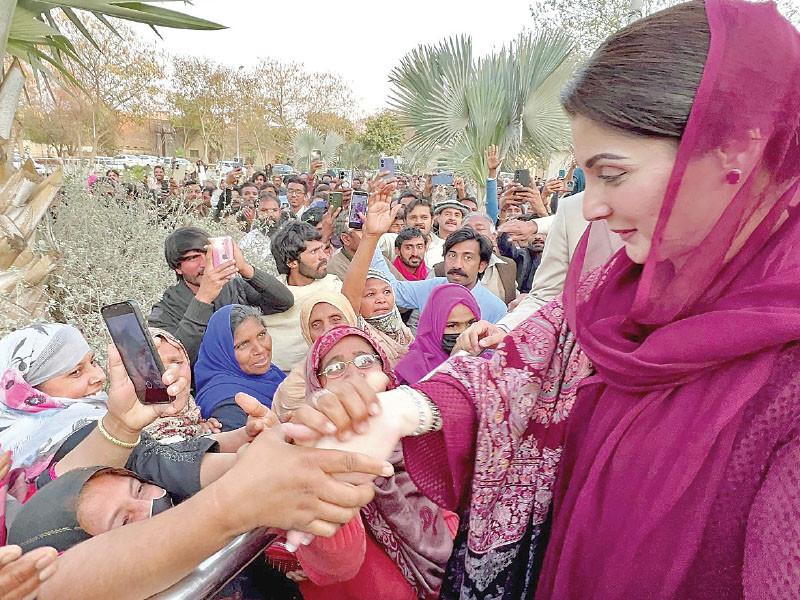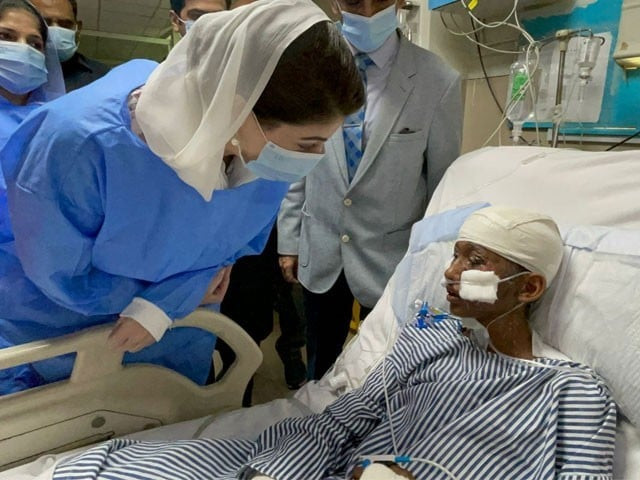
Into the future: A tech-driven governance model in Punjab
Data-driven well-informed project planning, outcome-focused good governance, and technology-based third party monitoring and feedback are key to responsive service delivery and public satisfaction over various government initiatives. Ubiquity of social media and the rise of citizen journalism have made the public sector even more vulnerable to criticism and query. The conventional ways of service delivery and public engagement have become counter-productive at the best.
Very much cognizant of this pressing paradigm shift in the statecraft, Punjab’s first female Chief Minister, Maryam Nawaz Sharif, has embarked on a rigorous journey of revamping the conventional models of service delivery, monitoring and evaluation. With a smart cabinet of talented young professionals, she is hell-bent on overhauling decades’ old governance model that was least responsive to the true public needs and expectations.
In the very first month after assuming responsibilities as the CM of country’s biggest province of over 127 million people, she has taken multiple meetings on improving governance in education, health, hygiene, communication infrastructure, IT, industry, agriculture, solid waste management, environmental protection, public safety, social welfare, transport and women empowerment. It goes without saying that the Government of Punjab, under the vibrant leadership of CM Maryam, is introducing simultaneous interventions to overhaul all ailing and non-responsive departments.
The CM believes in data-driven, effective project planning of all government initiatives meant for public welfare and socio-economic uplift. The government’s landmark initiative of Ramadan Nigahban programme is a glaring example, wherein agreed-upon data of BISP and NADRA beneficiaries has been utilised, cleansed and verified through door-to-door verification by the representatives of district administration concerned before the distribution of Ramadan relief hampers of 18 kilograms each, at the doorsteps of verified beneficiaries. The delivery of approximately 6.5 million relief hampers has been digitally documented using discrete QR code on each hamper through an online app developed by the Punjab Information Technology Board (PITB).
However, the CM has stressed upon making the data more credible and inclusive for any future government intervention, by removing anomalies thereof. She has, therefore, directed to build Punjab’s first-ever socio-economic registry by conducting door-to-door surveys of the entire 127 million population of the province.
The project for the rehabilitation of 509 arterial and connector roads in the province has already begun by the Communication and Works department, which has been directed to complete the rehabilitation of all major roads of the province to ensure ease of commute within this fiscal year. Rigorous planning is under way to construct Pakistan’s first IT City, Knowledge Park, Film City and 100k low-cost housing units for the less-privileged class. CM Maryam has also directed for the meticulous brainstorming to launch a scheme under Punjab Higher Education Commission (PHEC) to award 500 undergrad scholarships to talented students of deserving families to study in IVY League or other best-ranking international universities.
Other initiatives include the revamping and relaunch of Sehat Card, along with Air Ambulance and 1122 Motorway Ambulance Service. Punjab Safe Cities Authority (PSCA) and National Radio and Telecommunication Corporation (NRTC) have signed an agreement to implement smart safe cities projects in 18 more cities of the province by the end of this year, raising the tally of smart cities in Punjab to 21. An MOU has also been signed between Transport and Mass Transit Department and the Bank of Punjab for the provision of 20,000 petrol and e-bikes to students on interest-free, easy monthly instalments since May of this year.
Moreover, the Technical and Vocational Training Authority (TEVTA) has been directed to revamp its courses and curriculum in line with the needs of the labour market after conducting a skill mapping exercise, both in the local and international job markets. The Sports and Youth Affairs department has been tasked by the CM to present a comprehensive plan to revamp major sports, along with the rehabilitation and construction of required sports infrastructure in the province.
In order to facilitate the industrial sector of the province, the establishment of Economic Corridor Development Authority based on industrial mapping of Urban Unit has also been envisaged.
Chief Minister Maryam makes maximum use of online tech apps and dashboards to ensure effective monitoring of various public sector programmes. Other than the Ramadan Nigahban programme, the ‘Suthra Punjab (Clean Punjab)’ programme is another example in which district administrations of different districts are sending ‘before and after’ pictorial and video evidences of the cleanliness drive in their respective areas.
The CM also responds to people’s complaints on social media platforms such as X (Twitter). An example in this regard is the provision of a wheelchair to a disabled student of 6th grade from Fort Abbas, who appealed to CM Maryam for help via social media. Moreover, in addition to her surprise visits and public interactions, a dedicated complaint number of the CM, 0800-02345, is another way of soliciting public feedback to gauge efficacy of her government’s service delivery vis-a-vis people’s expectations.
Given the vivid clarity of focus and unprecedented commitment to cause, it can rightly be understood that this overhauling effort to make the service delivery more responsive to public needs would prove instrumental in winning over public confidence and satisfaction in various government initiatives.


COMMENTS (4)
Comments are moderated and generally will be posted if they are on-topic and not abusive.
For more information, please see our Comments FAQ